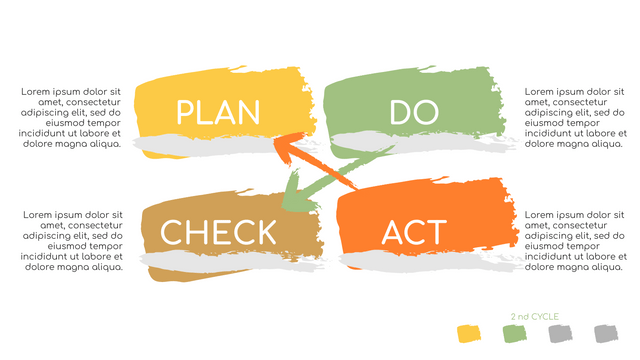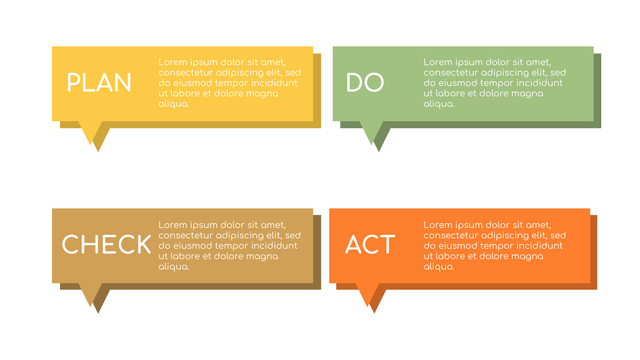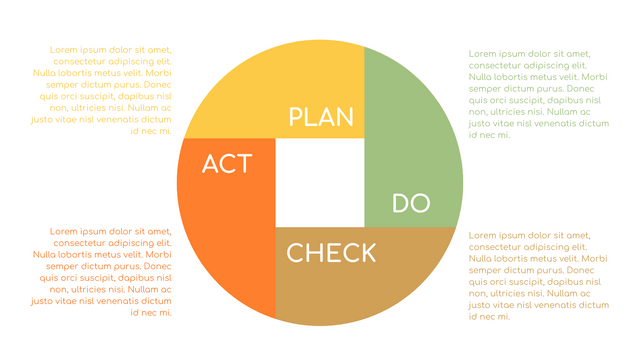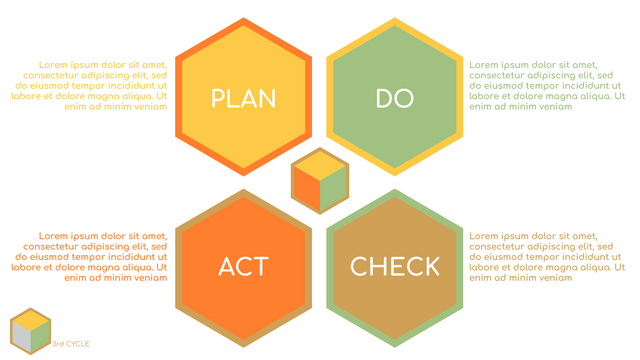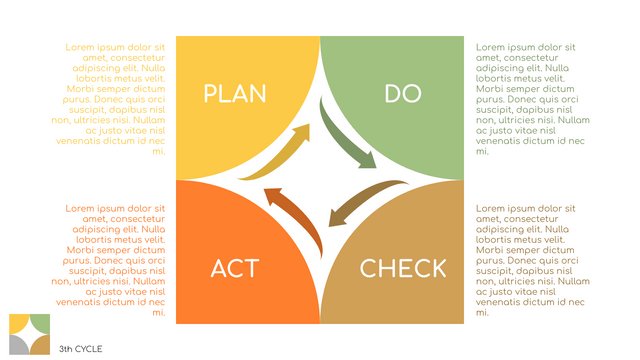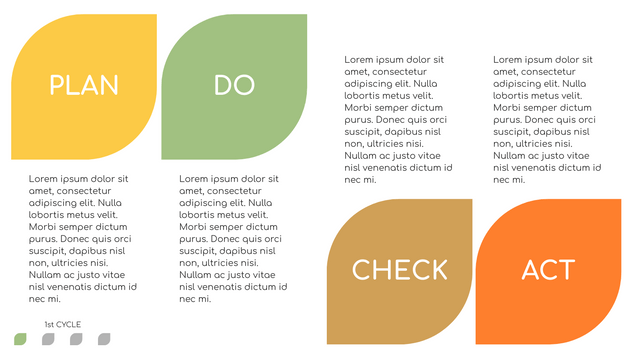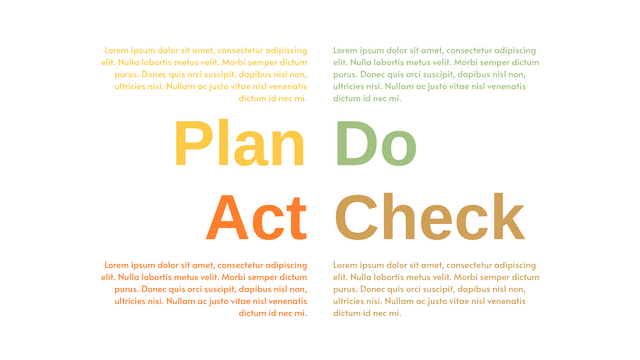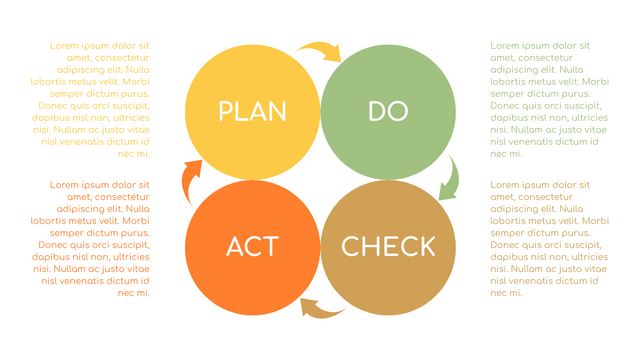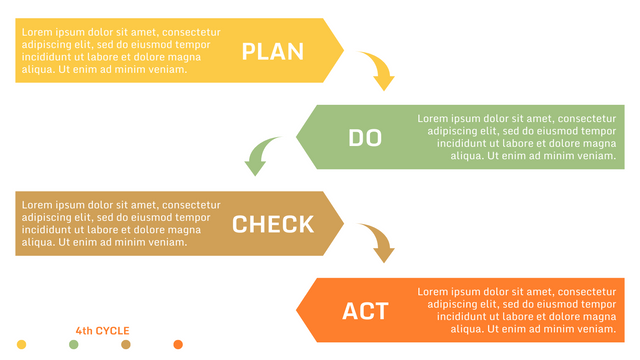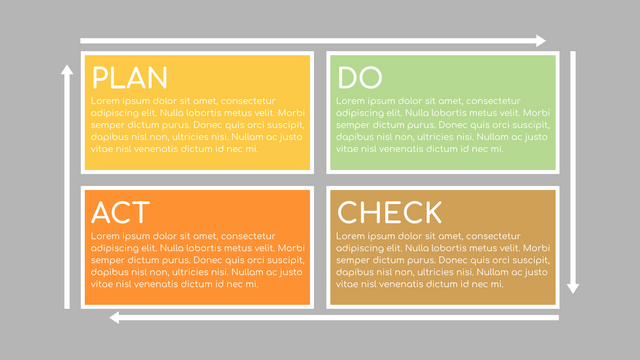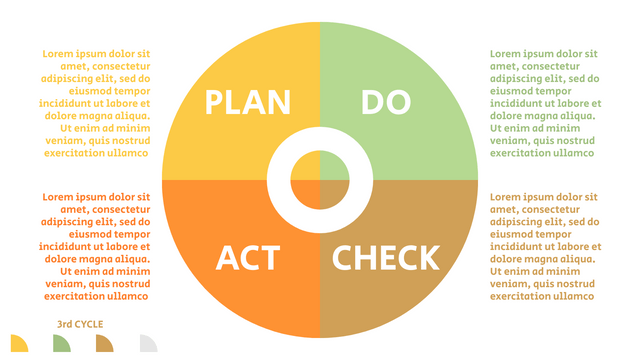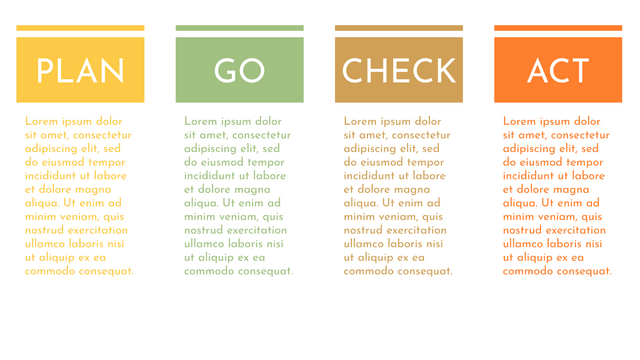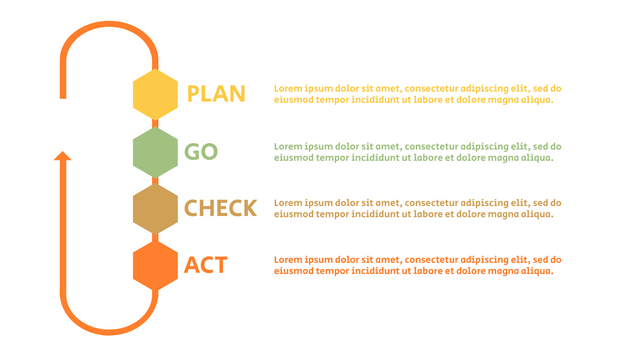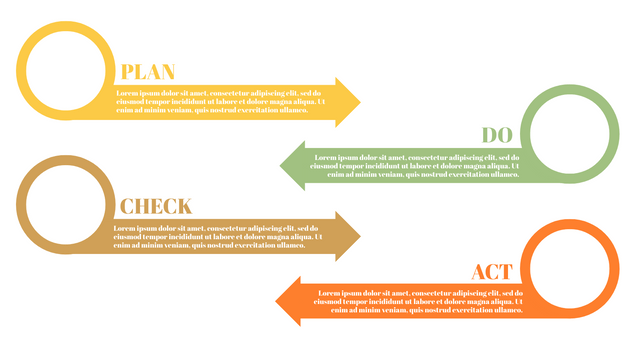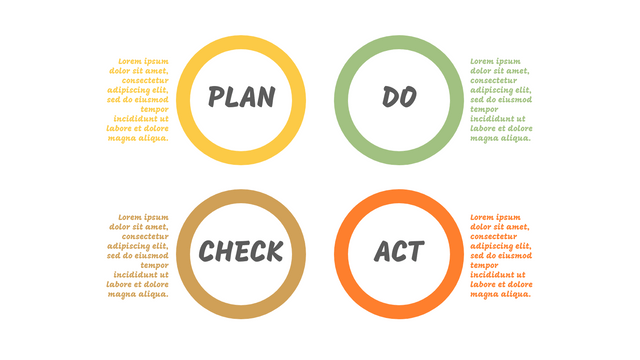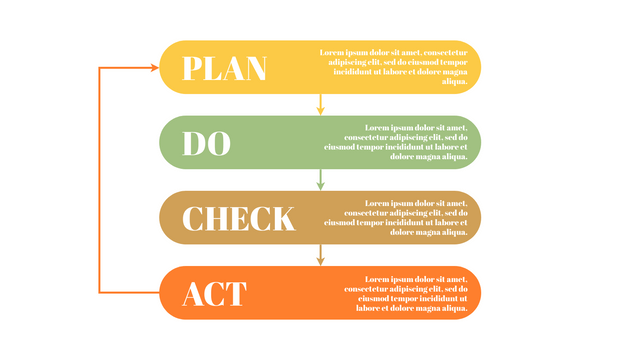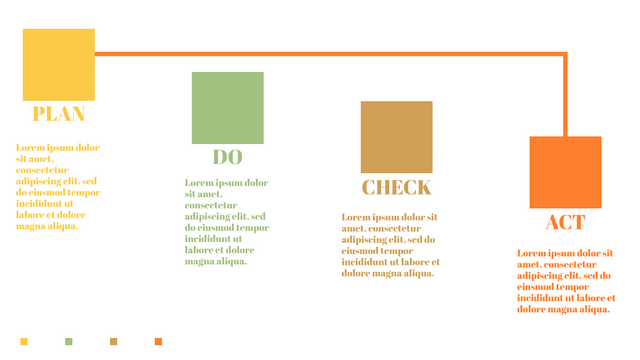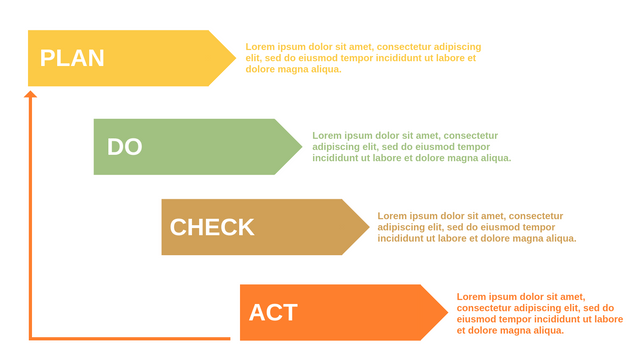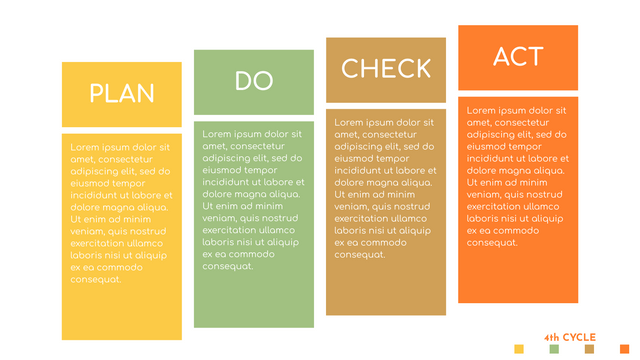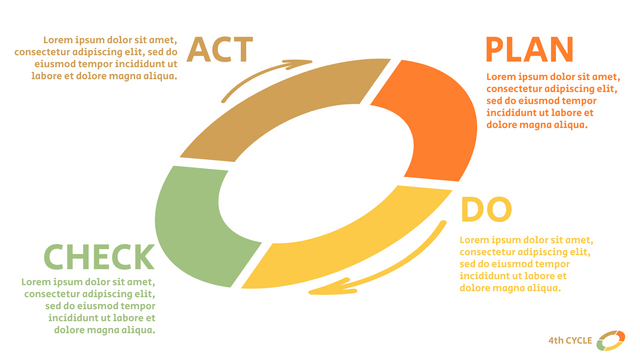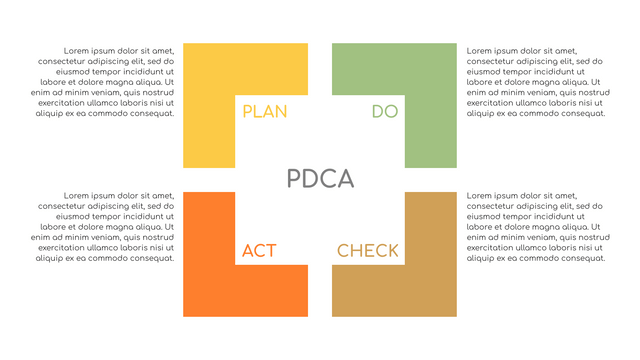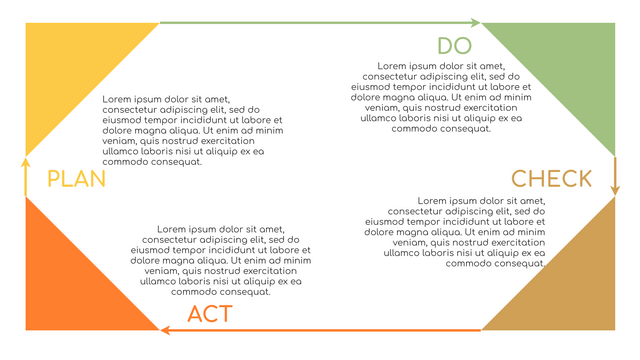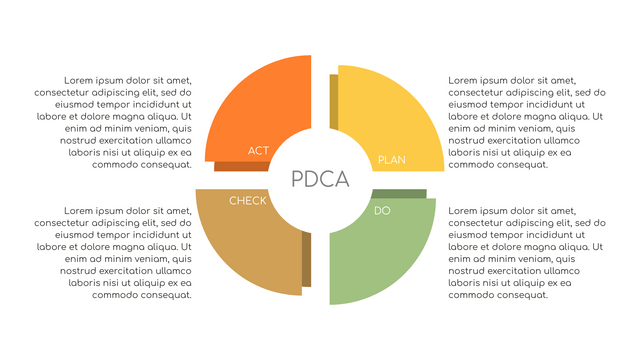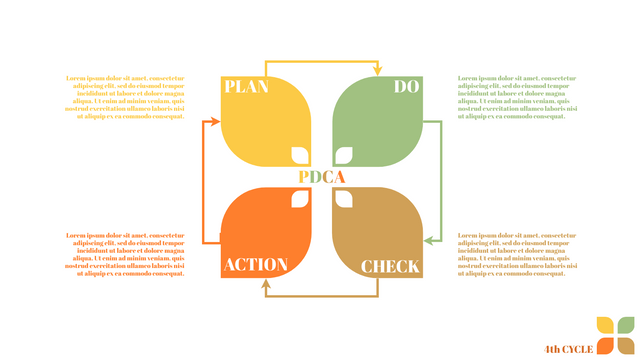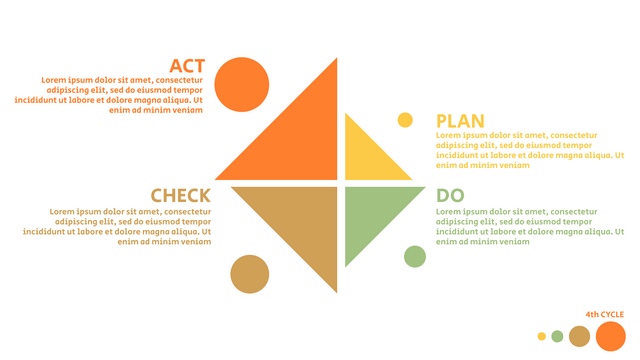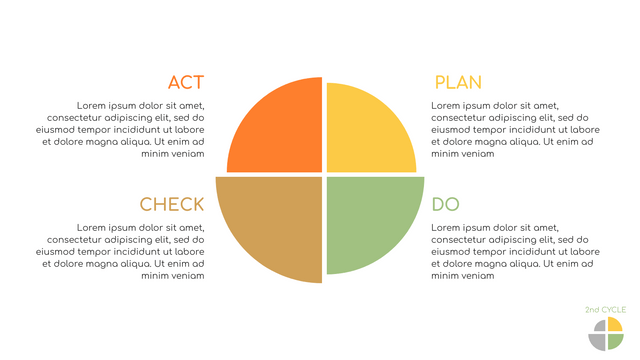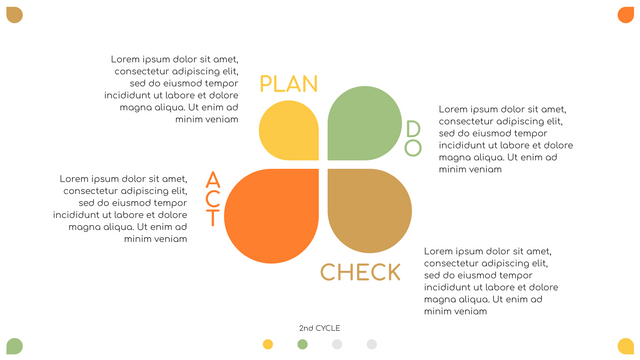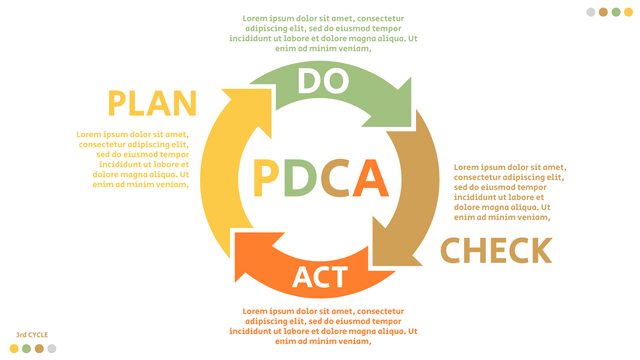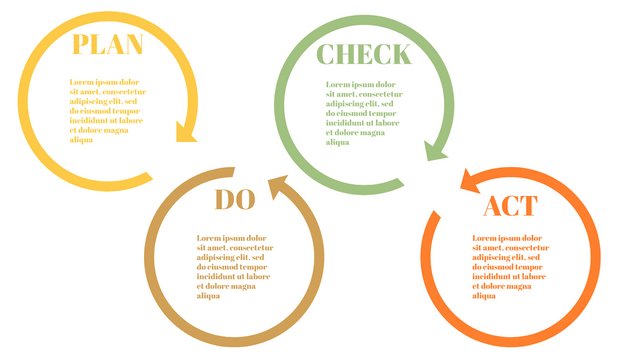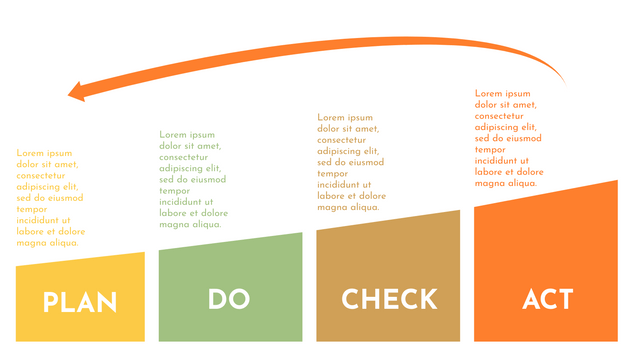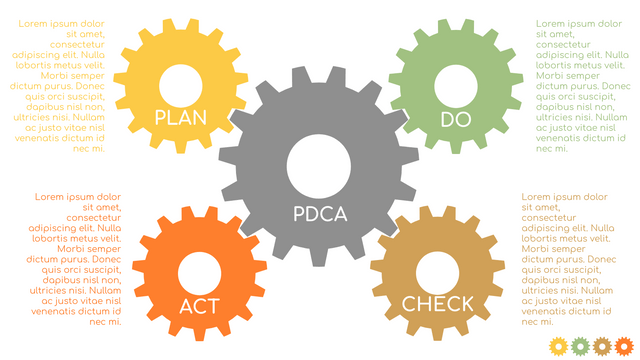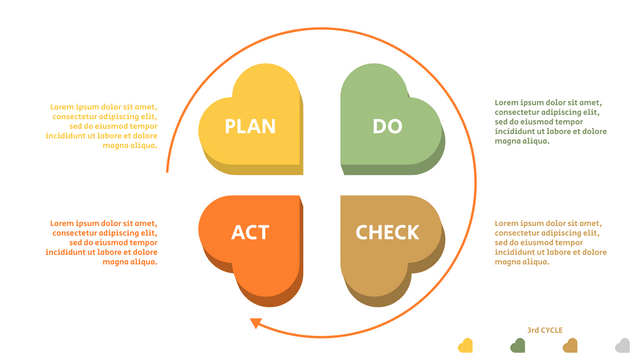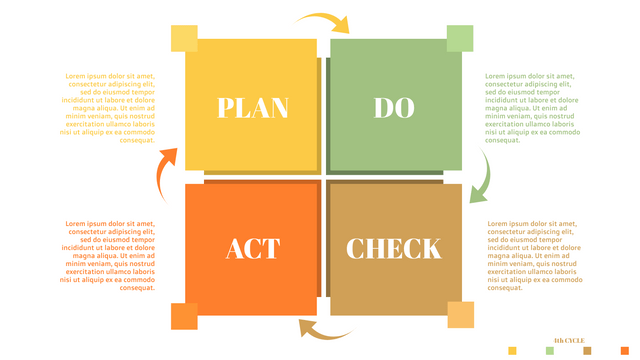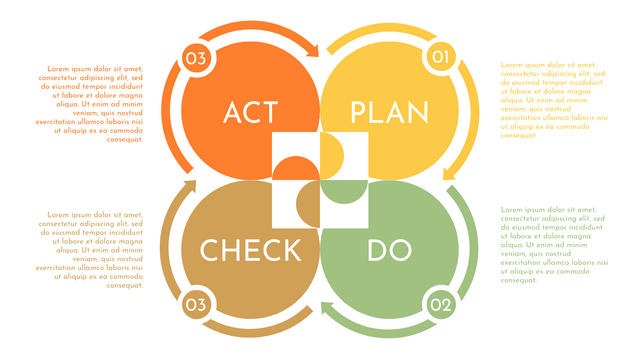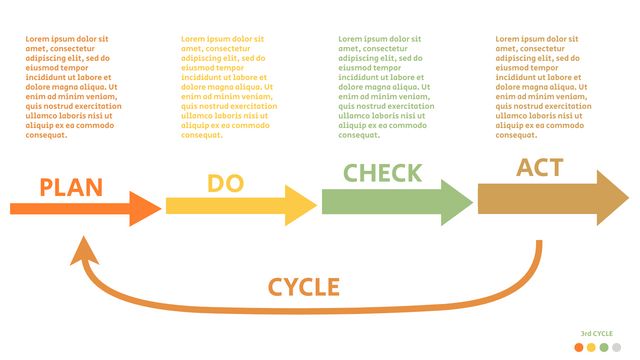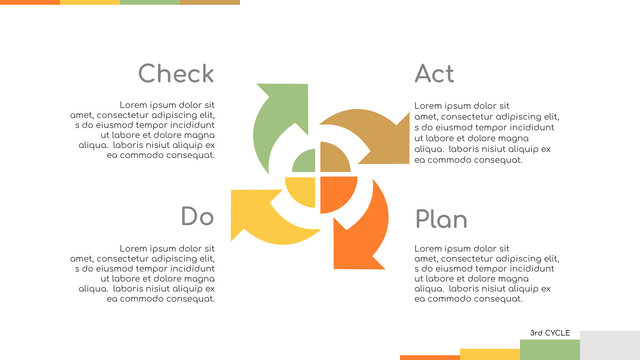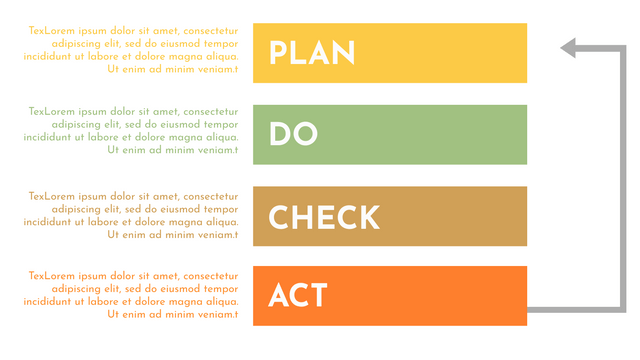Plan-Do-Check-Act (PDCA) is a continuous improvement approach pioneered by Dr. W. Edwards Deming, one of the founders of Quality Management. The PDCA is an approach that emphasizes that once improvements have been identified and implemented, we should look for other ways to further improve, and that this process should be ongoing.
The PDCA cycle describes the four-stage control cycle of the continuous improvement process: plan, do, check, and act. It is also known as the Deming Circle, Deming Wheel or Shewhart Cycle.
Plan - the "plan" in the PDCA cycle means setting goals, defining key indicators, making assumptions, and coming up with measures that are appropriate to improve the current situation.
Do - The implementation of the plan in the "Do" phase contains very different dimensions. It can be a limited and precisely monitored attempt to change the process flow as a test or as a complete project, such as developing a new product.
Check - the initial aspect of "do" becomes clear from the facts, and then it analyzes precisely which effects are observed. The result of this step determines whether the planned measures are cancelled, modified or finally established.
Act - The proposed change in the plan can only be achieved as a final step, such as by redefining standards or establishing a new product strategy. It is also possible to revert to the previous status because the assumptions on which the "plan" was based have proved to be incorrect. This is followed by a new PDCA cycle, either by reviewing new, modified approaches or further promoting positive developments.

